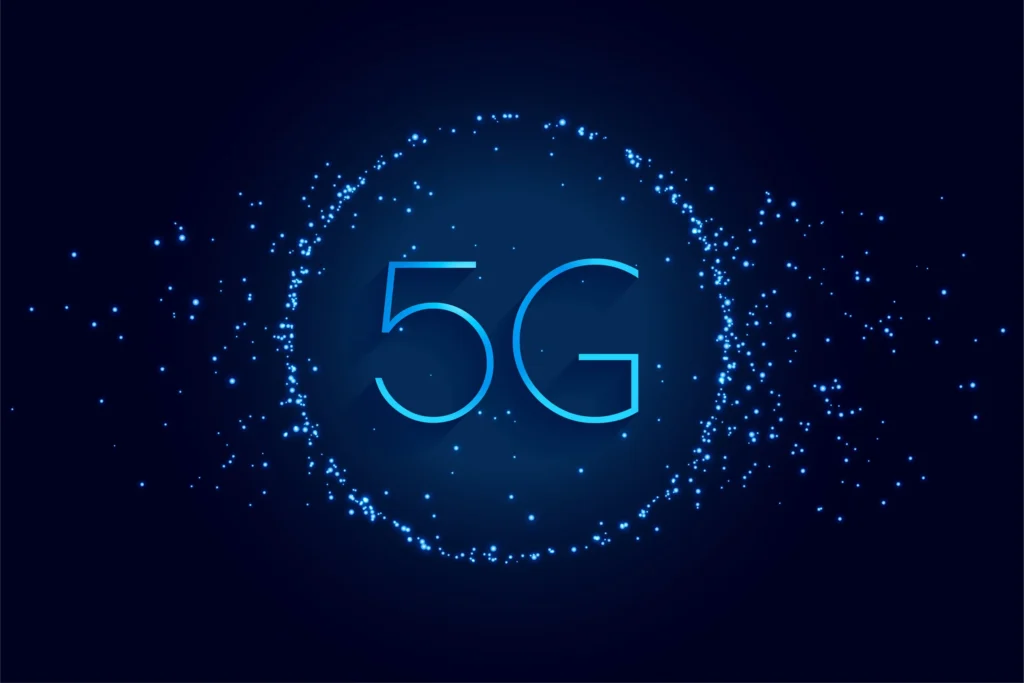At SmarterHome.ai, we help customers compare and shop for home services. As part of that mission, we consider it our responsibility to demystify technical jargon and keep our customers informed. 5G is a perfect example of a term that’s used everywhere in this space but rarely defined.
If you’ve upgraded your phone in the past few years, you’ve likely seen the little “5G” icon light at the top of your screen. You may have even heard that 5G will “change everything” – from how we browse the web to how self-driving cars and smart homes operate. But what is 5G, really? And how does it affect your internet, mobile, or even TV experience?
A Short History Lesson: From 1G to 5G
To understand 5G, you first have to know where it came from. The “G” stands for “generation,” and 5G is the fifth generation of wireless network technology. The first generation of this tech, or 1G, included the very first cell phones.
Dating back to the ‘80s, those original wireless phones were voice only machines, entirely analog, and notoriously buggy. (They were also huge by today’s pocket-friendly standards.) 2G upgraded to digital communication and introduced SMS and MMS. SMS stands for Short Message Service, what we now refer to as texting; and MMS is Multimedia Messaging Service, or how we send each other images and other files.
3G was a huge leap forward in terms of data transfer. It enabled live video chats and streaming, as well as mobile access to the internet and email. (Note: Some of these features first became available with 2G, but 3G is where the tech really took off.) This is the generation that saw the release of the first iPhones and Blackberries.
As you might imagine, 4G was basically a high-definition upgrade to all of these features. Image quality became much higher, mobile web access became faster, and mobile gaming reached new heights.
4G remains more or less the standard as current developers evolve with 5G. Compared to the previous generation, 5G has lower latency, faster download and upload speeds, and a greater frequency range. Given that each generation lasts for about a decade, we’re still in the middle of 5G’s reign (the tech having been first rolled out in 2019).
How Does 5G Work?
5G works by using a broader range of frequencies – especially high-frequency millimeter waves – that allow for greater bandwidth and faster data transfer than 4G. These waves can carry much more information than 4G but don’t travel as far, which is why 5G networks often rely on a dense web of small antennas (called “small cells”) placed on rooftops, lampposts, and buildings.
5G download speeds can be as much as 10 times faster than 4G, but speed can vary widely based on numerous factors. In actuality, there are three primary types of 5G:
- Low-band 5G: Wide coverage but only slightly faster than 4G.
- Mid-band 5G: Balanced speed and coverage, ideal for cities.
- High-band (mmWave) 5G: Blazing fast but with limited range – used in hotspots like stadiums or airports.
What does this mean in practical terms? On average, 5G download speeds are about 10 times faster than 4G (though this can vary widely based on numerous factors).
Is 5G Dangerous?
Let’s tackle this head-on: No, 5G is not harmful to your health.
There’s been a wave of misinformation suggesting that 5G causes health issues – from headaches to cancer to even spreading viruses. These claims have been repeatedly debunked by public health organizations, including the World Health Organization (WHO) and the Federal Communications Commission (FCC).
5G operates on non-ionizing radio frequencies, which means it does not have enough energy to damage DNA or cells – unlike harmful ionizing radiation like X-rays or gamma rays. In fact, the frequencies used by 5G are lower than those emitted by your microwave oven.
Bottom line: 5G is safe.
Why 5G Matters for Internet, Mobile, and TV Services
As a company that helps consumers compare and purchase internet, mobile, and TV services, we know firsthand how 5G is reshaping the landscape:
Mobile Plans
- Faster speeds mean smoother streaming, better gaming, and lightning-fast app performance.
- Lower latency allows for real-time applications like augmented reality and mobile video conferencing.
- More capacity ensures reliable service even in crowded areas.
Home Internet
- 5G home internet is becoming a viable alternative to cable or fiber, especially in areas where traditional broadband options are limited.
TV and Streaming
- High-speed 5G networks can support multiple 4K streams simultaneously, with minimal buffering.
- Cord-cutters benefit from portable and consistent service across devices, powered by mobile 5G hotspots.
The Future Is 5G
Whether you’re downloading a movie in seconds, streaming live sports in 4K, or running your smart home on a single mobile network, 5G is setting the stage for a more connected future.
And if you’re wondering which provider offers the best 5G plans for your budget and location, we’ve got you covered. Our comparison tools make it easy to find the right internet, mobile, or TV provider – 5G-ready and future-proof.
If you’re still unsure about whether 5G is right for your household, contact us for personalized plan comparisons and recommendations tailored to your area.

